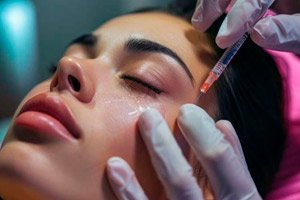
All iLive content is medically reviewed or fact checked to ensure as much factual accuracy as possible.
We have strict sourcing guidelines and only link to reputable media sites, academic research institutions and, whenever possible, medically peer reviewed studies. Note that the numbers in parentheses ([1], [2], etc.) are clickable links to these studies.
If you feel that any of our content is inaccurate, out-of-date, or otherwise questionable, please select it and press Ctrl + Enter.
The dosage of cosmetic Botox depends on the climate
Last reviewed: 02.07.2025
 ">
">Patients living in "sunny" climates may need higher doses of Botox to achieve good results in the cosmetic treatment of facial wrinkles and lines, according to a study published in the July issue of the journal Plastic and Reconstructive Surgery.
Dr Kim L. Borski of Stoke Mandeville Hospital, UK, and colleagues compared the results of Botox treatment in two groups of patients: a "high sun" group of 292 women on the Mediterranean island of Malta and a "low sun" group of 231 women treated in London, UK. The patients in Malta were treated in the summer, and the patients in the UK were treated in the winter.
Patients received Botox injections into the lower forehead muscles (glabellar muscles) and all procedures were performed by experienced plastic surgeons using a standardized technique. During subsequent visits, patients received additional doses as needed to achieve complete clinical paralysis. The average total dose of Botox was higher in the high sun group: 29.2 versus 27.3 units. Patients in Malta also received on average more additional doses: 2.24 versus 1.98 units.
The researchers speculate that the difference may be due to greater development and functional activity of the glabellar muscles, which are involved in squinting in the sun. Other possible factors include the effect of higher temperatures or direct exposure to sunlight on the body's response to Botox.
The researchers conclude that treatment protocols that strictly regulate doses and distribution may result in undertreatment in sunnier climates. "Treatment protocols may need to take into account the climate in which treatment is administered to achieve more predictable results," Dr. Borski and her co-authors note.
